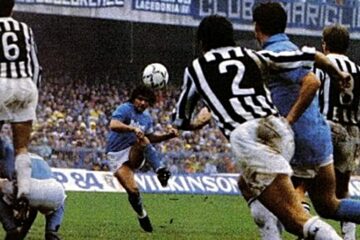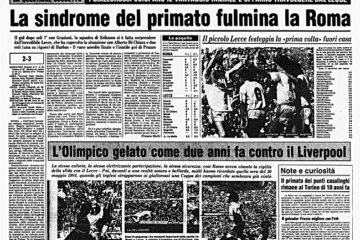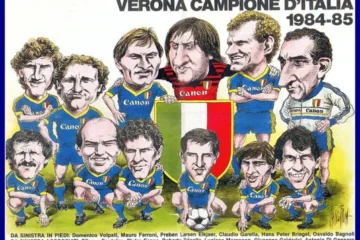The great novel of the “Scudetto” | Part 1!
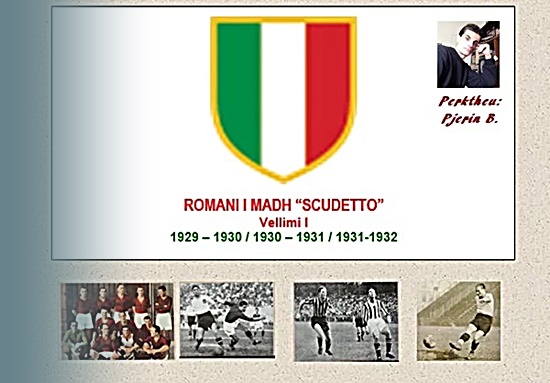
The great novel “Scudetto”!
The story of a great football, the Italian Serie “A” championship!
PART 1
INTRODUCTION THE HISTORY OF A MAGNIFICENT FOOTBALL SCUDETTO *(1)
The legend of the most attractive championship in the world started in 1929, almost by chance it was born in Italy “il girone unico” (*2). The most important national tournament was born in the previous century, the year 1898, with an initial season including three games in a single day in the city of Turin, with “Genoa” the first winner; The lottery of the participating teams has been growing to a noticeable size, time and time again, where the interest in the sport imported by the British masters spread like a “spot of trouble”. “Il calcio” embodies a massive popular inspiration that is evident and manifested in the increase in the flow of the public on the sides of the fields. At first it is like a “tight rope” to limit the momentum, enthusiasm, then it starts by building the stairs of the stands by hand hands, until the phenomenon becomes massive, calling interest and attracting passion. The ball interprets the desire for attention, the pleasure of agonism and the technical gesture, but also that will to spread, to support, to be placed in the game to replace the fight and its mistakes. It is not for nothing that the great spread of “il calcio” is recorded as a chapter, like the day after the barbarities of the first world conflict. In a few years, the construction of large stadiums equates to rationalistic efforts in the technical and competitive landscape. When the territorial criteria are passed, the good quality teams are stripped of their provincial features and join a group (Girone unico), then the modern “il calcio” was born. in Italy, with the prospects of a development of unthinkable ages. (Calcio 2000 #48/12-2001)
GLOSSARY: *1. SCUDETTO – Serie “A”, Champion title / badge on the jerseys of the championship winners. *2. GIRONE UNICO – A group of teams with round-trip matches.
1929 – 1930 “AMBROSIANA”

THE CHAMPIONSHIP OF 1929 – 1930
“GRANDE RIMONTA NERAZZURRA (*1) The arrival of a single group is a kind of surprising fate. Many things had changed since 1898, the date of the first championship, discussed in a single day between four teams. The view was enlarged. It was passed from the geographical difference between the groups (north-south) to privilege a technician (the combination of the best teams and those of a lower level in the classification of the two groups).
In the summer of 1929, the president of the Federation, Leandro Arpinati, and the secretary, Giuseppe Zanetti, decided to change; set together between them, on the one hand, the eight best teams classified in the two groups, and on the other hand, the eight second teams of these two groups. Then the names of these two groups changed, “Serie A” for the first category and “Serie B” for the second. This is how the selection of values was implemented until then opposed by the “small” teams for economic reasons. The federal council accepted without objection, thus giving birth to “Girone unico” destined to present a powerful engine of technical growth and popularity of Italian football.
The teams, however, were 18th, the reason for the duration of the additional “spareggio” matches between the 8 teams, recognizing at the same time the passage of Lazio and Napoli, which was advised “il ripescaggio” (*2) of both teams, and the desire to save Triestina, which was classified in 9th place, for patriotic reasons. Predictions are for Bologna, the reigning champions, and Torino, which, however, shows signs of fatigue after coming from a long South American tour, but both of which are quickly leaving their goals for the title. The first phase is dominated by Genoa (name Italianized by the regime) and Juventus. Ambrosiana seems out of “war” after 9 weeks of two big losses, from Rome, outside its field, and from Triestina in Ambrosiana’s field. On the contrary, since Sunday, after two defeats, winning in Alessandria, the “Neroazzurri” are heading for a powerful “attack” on the way to the title, which placed them after the 15th week, one point behind the leading duo. A week later, winning in the field of Juventus, Ambrosiana is at the top of the classification, having as an advantage the defeat of Genoa in the field of Livorno. On February 16, Ambrosiana is the winter champion, and in a few weeks, it extends the distance in points from Juventus and Genoa; he would only lose in Naples on May 29th, the next day on June 8th in Turin 4-1, but in the 32nd week in a dramatic match he “pushed the attack” of Genoa in its field 3-3, and one Sunday later, beating Juventus 2-0, he is “Campione d`Italia” a week before the end of the tournament. At the bottom of the classification is the rapid decline of Cremonese. The “fight” to stay in Series A sees Padova, which cannot cope with being drowned by an 8-0 in Rome, and which is finally defeated in “series B”.
WINNERS
“IL BALILLA, EI SUOI… FRATELLI” (*3)
It was previously called “Internazionale”, and now it is called “Ambrosiana” which came from the merger, the merger in 1928, with another historical society of the city, “Unione Sportiva Milanese”. This is why, next to the traditional blue-black vertical stripes, there is a black-and-white checkered edge (Milanese colors) on the collar of the jerseys. The honorary president is the Tuscan deputy Lando Ferretti, the effective president Oreste Simonotti, organizational “factum” and sports director Aldo Molinari. The sales campaign is at the wrong height, reinforcements arrive only in the summer, except for “mage” Arpad Veisz. The structure of the team is solid. In goal, the skillful Degani, the defense is led by Allemandi, who will become world champion; collaborators, another full-back, Gianfardoni, on the wings, both national midfielders, Rivolta, Castelazzi. Midfielder of the “lo spigulone” center, tall Gipo Viani, small but with a great skill, who will later become famous as a coach. In attacks, the indefatigable Serantoni and with a “magical” relationship with Meazza and Blasevich, in the arms of Visenti of “Poldo” Conti, master of tribulation and in the service of the equilibrist, acrobat, talent at that time “Balilla”, Giuseppe Meazza.
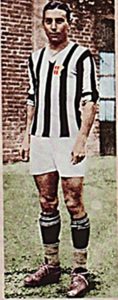 THE SURPRISE “IL FONAMBOLO IN QUARANTENA” (*5)
THE SURPRISE “IL FONAMBOLO IN QUARANTENA” (*5)
The “Card of Viareggio” in August 1926 had closed the borders of “calcio” while still leaving the door open for “rimpatriati” (repatriates), well known as “oriundi “. Argentina’s excellent performance at the Amsterdam Olympics in 1928 convinced the Juventus leaders to turn to Raimundo Orsi, the left winger with a lightning-quick dribbling. “Pharaonic” offers (salary of 8,000 lira per month, a “Fiat 509” and an initial price of 100,000 lira, staggering numbers), convince Orsi to accept, provoking an indignation among his compatriots. The countermeasures were of such a violent nature that the Italian Federation refused, threw down the transfer, leaving Orsi in quarantine for a season. Then from 1929-1930, “Mumo” became available showing an extraordinary spectacle of feints, creations on the field and scored goals, for the first time in Italian football fields. In December, Vittorio Pozzo, the newly appointed technical director of the Italian national team, wore the Azzurri shirt, thus opening a great season destined to culminate with the title of world champion in 1934. Born in Buenos Aires to Italian parents with 2 December 1901, Orsi was apparently “la piu grande ala” (*6) of Italian football for all time. He died on April 6, 1986.
“CREMONESE” DISAPPOINTMENT
Cremonese had been anchored in quality football in 1929 and since then had figured with dignity, reaching second place in its group in 1926. The championship with only one group of teams had been fatal for him. Serious mistakes were made in sales; the defense was weakened by the sale of Maroni to Milan while in the attack, the left wing immediately became weak and later remained a problem with “nuovi” (*8), Cavicchioli and Mazzoletti unable to find the way to the net. After 16 weeks and after the defeat in its field against Brescia 0-1, the Hungarian coach Bela Ludvig was replaced by Talamazzini without remarkable results. Without a game and fighting spirit, the “griggiorosa” team lost Serie A, four weeks before the end of the tournament, on June 1, the day of the draw in its own field with Padova, it was a sign of a serious synthesizing crisis on an elegant date; Cremonese would need 54 years to “enjoy” “serie A”!!! Only in 1984, the team placed in “serie C” and in “quarta serie” will be able to return to the big teams.

“THE EVENT”
“IL DRAMA DI VIA GOLDONI” (*9)
It takes three more weeks towards the end (the last two weeks plus the recovery matches of the 30th week), on June 15, 1930 at the old stadium on “Goldoni” street in Milan, Ambrosiana must face the last obstacle on the way to the “scudetto”; Genoa arrives, the second in the classification distanced by three points, after two clear defeats of the leader, in Naples and in the field of Turin. The expectation is great. The old wooden stands that are packed full of fans start to dance from the left side a few minutes before the start of the match, when people follow the exercise of an airplane that flies here and there over the field of the match. At one point, the plane descends slightly to release the challenge ball, while the simultaneous movement of the audience provokes the irreparable; with a deafening noise the structures fall down, people disappear from the view of being “captured” by a great dust. Calls for help are raised immediately.
In the next match, the net surrounding the field is removed and the fans are dispersed on the field of play; however, they do not want to protest, even though it is difficult to avoid the “danger” of the match not being played. Among the wounded, a call for Meazza: “If you win today, I will get well.” While the first aid is speeding up (in the end 14 injured will be counted, and fortunately no dead), the referee Carraro of Padua gathers the managers and footballers of both teams and gives the decision to play, however, for which will be discussed much later. The match ends “rocambolesca” (*10) with an eloquent 3 – 3 ending, and with the title in Ambrosiana’s “pocket”.
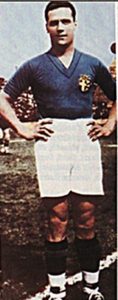 “CHARACTER” “NEL CARNEVALE DI TRIO” (*11)
“CHARACTER” “NEL CARNEVALE DI TRIO” (*11)
Belonged to the famous trio of Turin. Gino Rossetti (but his real surname was Rosetti, where an error of the civil status office had added an “s”), with the director Baloncieri and “l`ariete” (*12) the Argentinian Libonati. He was a force of nature. Strong as a “bull”, he possessed the skill of great dribblers and a shot with famous speed. He was born in La Speria on November 7, 1904. The president of Turin, Marone, agreed to buy him from “Spezia”, (second division) in 1926, for 25 thousand lire.
The governing council of Spezia, however, did not give a guarantee for the sale. Disappointed, the footballer decided to join his older brother Giuseppe, who emigrated to Chile, and play with “Valparaiso”. The wrong decision, losing the player and the money set, “returned” the Ligurian manager, and it was the goalkeeper Latella who “fished” Gino Rosetti on the evening of October 3, 1926, in a small hotel in Genoa, waiting to leave, for to bring him with the “grenade” jerseys (*13). Rosetti played “interno sinistro” (*14), and found in Baloncieri and Libonati the ideal supports. His progress is sensational: 19 goals in `26-27, a year later 23 goals, even in `28-29, 36 goals in 27 games. In the first tournament of “girone unico”, now a player of the representative team, she felt the lack of support from Libonati, “hindered” by an illness, and yet she is confirmed by scoring 17 goals. Only in 1933 did he have to leave Turin for Naples. He died in 1992.
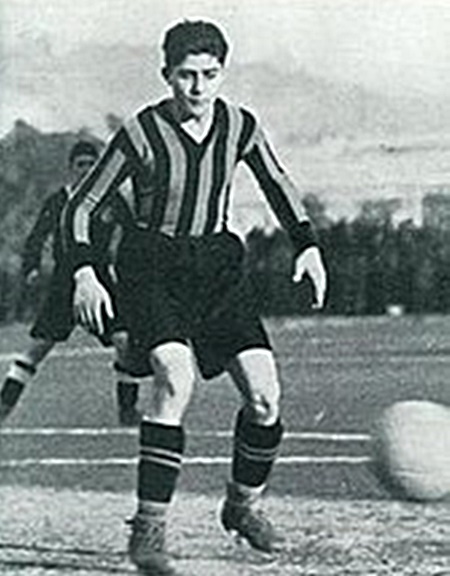
“SCORPOR OF THE TOURNAMENT”
“L`EXPLOIT DI BABY GOAL” (*15)
In the period of the “girone unico” championship, Giuseppe Meazza is only 19 years old, yet he is at the peak of development, “blooming” of his skills as a player class. According to some opinion, the greatest Italian player of all time. Certainly, the prototype of the artist as a goalscorer in the Italian way, a complete champion for the ability to use the ball, the tactical genius, and the “exciting” feeling (*16) of the goal. With 262 goals, he is the top scorer in the Italian championship after Silvio Piola, while he belongs to the fourth place in the limiting list of the “girone unico” tournaments with 218 goals scored.
It was enough for him to represent in the championship as a hopeful, promising, as a “radiator of quality” (the definition of the great Bruno Roghi), and to leave traces of his class; 11 goals in `27-28, even 33 goals in 29 games the following year, 18 years old. Fast even “teenager”, acrobat but also with a sharp edge that leaves the opponents stunned and even projects the shot for the net, Meazza is mindless, amazing for the premature maturity that prompts the “Azzurra” technical commissioner Vittorio Pozzo to do to deputize against Switzerland in Rome on February 9, 1930, in the place of the long-awaited Sallustro. Meazza scores two goals, which close a 4-2, the recovery of the “Azzurra” team, becoming the “idol” of the whole of Italy. He ended the season at the top of the scorers with 31 goals scored in 33 games; now there are no doubts, he is the strongest Italian player of the period.
GLOSSARY | FIRST CHAMPIONSHIP 1929 – 1930
*1-Grand remonta nerazzurra – recovery / reassembly, of the team with blue – black jerseys. Growth in the classification table.
*2-Il ripescaggio – bring me back / find me again / re-fish again.
*3-Il balilla ei suoi fratelli – epithet for G. Meazza and his brothers.
*5-Il funambolo in quarantena – acrobat / equilibrist. Epithet for Orsi, who did not play a season due to great indignation among his Argentine compatriots.
*6- La piu grande ala – The greatest wing. Role in the field of play, where he stands out, stands out for his values.
*8-I nuovi – players who have just arrived in the team.
*9-Il drama di via Goldoni – the event that happened in the stadium where Ambrosiana played, which was located on “Goldoni” street
*10-Rocambolesca – a match with a flow of unforeseen/strange events one after the other.
*11-Nel Carnevale di trio – the title is for Rosetti, a player who belonged to the famous trio of Turin, together with Baloncieri and Libonati./ (Italian journalists often compare different epithets, even those with a sense of humor.
*12 – L`ariete – sign of the horoscope.
*13-Granata – the characteristic color of the Torino jersey team.
* 14 -Interno sinistro – role of the player in the field of play baby goal – (from English) the achievement / fame of the little one, Meazza .
_______________ ____________
Vizion Sportiv + Plus / Hour of Champions – Since 2013
References: The original title: “Il grande romanzo dello Scudetto” by Carlo Chiesa.
© All rights reserved
Translated by: Pjerin Bj. (Calcio 2000, personal collection 2001-2004).
*During the translation, Italian words were used in many cases in order not to deviate or to be closer to the original epithets, statements made by Italian journalists, directed to the facts, players, circumstances, etc., and remaining transmitted interesting, entertaining feelings to the reader. (My note)
Discover more from Sports Vision +
Subscribe to get the latest posts sent to your email.


